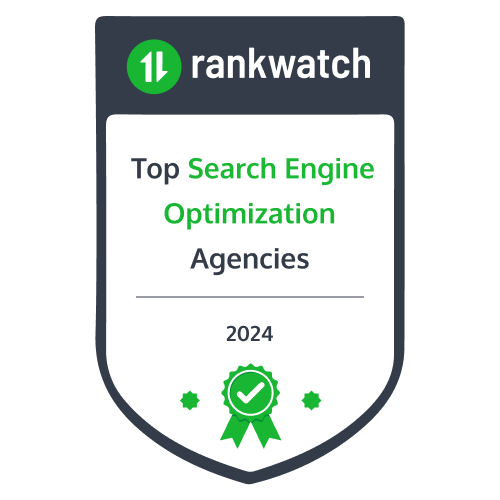In the competitive landscape of search engine optimization (SEO), link building continues to be one of the most influential ranking factors. Even as search algorithms become increasingly sophisticated, backlinks remain a cornerstone of how search engines determine website authority, relevance, and trustworthiness. This comprehensive guide will explore why link building matters, how it works, and the most effective strategies to improve your rankings through quality backlinks.
Here are some impactful link building statistics that demonstrate its continued importance in SEO:
- Websites with a strong backlink profile (high-quality, relevant links) rank an average of 4-6 positions higher in search results than competitors with weaker link profiles.
- Pages ranking in the top 3 positions on Google have an average of 3.8x more backlinks than those ranking in positions 4-10.
- Approximately 66% of SEO professionals consider link building one of the most challenging aspects of search optimization.
- Websites with backlinks from multiple unique domains rank approximately 160% better than those with links from fewer referring domains.
- Content with original research and data generates 4x more backlinks than standard blog content.
- Sites with backlinks from .edu or .gov domains see an average 30% improvement in domain authority compared to those without such links.
- Backlinks remain the second most important ranking factor after content quality, according to multiple SEO industry surveys.
- The average cost of acquiring a high-quality backlink through agency services ranges from $500-$1,000 per link in competitive industries.
- Over 94% of content published online receives zero backlinks, highlighting the importance of strategic link acquisition.
- Pages with links from relevant industry sites perform 2.3x better in rankings than those with irrelevant backlinks of similar authority.
Why Link Building Remains Critical for SEO
The Foundation of Google’s Algorithm
When Google launched in 1998, its revolutionary PageRank algorithm fundamentally changed how search engines ranked websites. Unlike earlier search engines that relied heavily on on-page factors, PageRank analyzed the web’s link structure to determine which pages were most important. Each link to a website was essentially counted as a “vote” for that site.
While Google’s algorithm has evolved dramatically with hundreds of ranking factors now in play, the fundamental principle remains: links signal trust, authority, and relevance. According to numerous SEO studies and Google’s own statements, backlinks remain among the top three ranking factors, alongside content quality and RankBrain (Google’s machine learning algorithm).
Links as Authority Signals
When a website links to your content, it’s effectively endorsing your page as a valuable resource. The more quality endorsements you receive, the more search engines view your site as authoritative in your niche. This authority translates directly into better rankings for relevant search queries.
Importantly, not all links are created equal. A link from Harvard University or The New York Times carries significantly more weight than one from a newly created blog with little authority. This quality distinction is crucial to understanding effective link building. If you want set up a discord carlbot server to learn and discuss more.
How Link Building Impacts Your Search Rankings
Direct Ranking Benefits
- Improved Domain Authority: As you accumulate quality backlinks, your domain authority increases- for instance I took a Clipping path service company from zero to DR 49 in one month. This was done with more links. Higher domain authority correlates strongly with better rankings across your entire website.
- Page-Specific Ranking Boosts: Links pointing to specific pages help those pages rank for their target keywords. This is why strategic link building often focuses on driving links to key commercial or informational pages.
- Faster Indexing: Search engines discover new content by following links. A robust link profile ensures search engines find and index your content more quickly.
- Ranking Stability: Sites with strong, natural backlink profiles tend to maintain their rankings more consistently through algorithm updates than those with weak or artificial link profiles.
Indirect Benefits
- Referral Traffic: Quality backlinks from relevant websites bring targeted visitors directly to your site, independent of search rankings.
- Brand Exposure: Being featured on authoritative websites increases brand recognition and trust among potential customers.
- Relationship Building: The outreach process involved in legitimate link building creates valuable industry connections that can lead to further opportunities.
The Mechanics of Link Equity
To fully understand link building’s impact, you need to grasp the concept of “link equity” (sometimes called “link juice”). This refers to the value passed from one page to another through links.
Factors That Influence Link Equity
- Authority of the Linking Domain: Links from high-authority sites pass more equity than those from low-authority sites.
- Relevance: A link from a related industry carries more weight than one from an unrelated field.
- Link Placement: Links within main content carry more value than those in footers or sidebars.
- Anchor Text: The clickable text in a link provides context about the linked page. Naturally varied anchor text helps search engines understand what your page is about.
- Number of Outbound Links: The more outbound links a page contains, the less equity each link passes.
- Follow vs. Nofollow: “Nofollow” links (those with a rel=”nofollow” attribute) theoretically don’t pass link equity, though they may still provide indirect benefits.
Effective Link Building Strategies for 2025
Modern link building requires a strategic approach focused on quality over quantity. Here are the most effective tactics for building ranking-boosting links:
1. Creating Link-Worthy Content
The foundation of sustainable link building is creating content that naturally attracts links. This includes:
- Original Research and Data: Publishing original studies, surveys, or analysis provides unique value that others want to reference.
- Comprehensive Guides: Definitive resources that cover topics exhaustively become reference points in their industries.
- Visual Assets: Infographics, diagrams, and other visual content are highly shareable and link-worthy.
- Tools and Calculators: Free interactive tools solve problems for users and attract links from resource pages.
Example: HubSpot’s annual “State of Marketing” report consistently earns hundreds of backlinks because it provides original data that marketers reference throughout the year.
2. Strategic Outreach
Proactive outreach remains essential for acquiring quality links. Effective approaches include:
- Resource Page Link Building: Identifying relevant resource pages in your industry and pitching your content for inclusion.
- Broken Link Building: Finding broken links on websites, then offering your content as a replacement.
- Expert Roundups: Contributing insights to expert collections increases visibility and often results in attributional links.
- Relationship-Based Outreach: Building genuine relationships with journalists, bloggers, and industry leaders leads to natural link opportunities.
Best Practice: Personalize each outreach email, clearly communicate the value of your content, and make the linking process as easy as possible for the recipient.
3. Digital PR and Newsworthy Content
Creating newsworthy content and distributing it through strategic public relations efforts can generate high-value links from media outlets.
- Trending Topic Tie-Ins: Connect your expertise to current news events or trends.
- Contrarian Viewpoints: Well-supported perspectives that challenge conventional wisdom often gain attention.
- News Hooks: Create content around important dates, events, or anniversaries relevant to your industry.
Example: When Airbnb published data about how their business model was helping homeowners avoid foreclosure during an economic downturn, they earned links from major financial publications by connecting their business to a timely economic issue.
4. Reclaiming Unlinked Mentions
Often, websites mention your brand without linking to you. These unlinked mentions represent easy link-building opportunities:
- Set up alerts for brand mentions across the web
- When you find unlinked mentions, contact the authors with a friendly request to add a link
- Provide a clear reason why the link adds value for their readers
This approach has high conversion rates because you’re not asking for new content—just enhancing existing content.
5. Guest Blogging (When Done Right)
Despite some controversy, strategic guest blogging on relevant, high-quality sites remains valuable for link building. The key is focusing on:
- Relevance to your industry
- Quality of the publishing site
- Value of the content
- Natural placement of links
Warning: Avoid mass guest posting on low-quality sites or using the same content across multiple platforms, as these practices can trigger Google penalties.
Link Building Pitfalls to Avoid
Understanding what not to do is equally important for successful link building:
1. Purchased Links
Buying links directly violates Google’s Webmaster Guidelines and can result in severe penalties. This includes:
- Directly paying for links
- Exchanging goods or services for links
- Link schemes and networks
2. Over-Optimized Anchor Text
Natural link profiles show diversity in anchor text. When too many links use exact-match keywords as anchor text, it appears manipulative to search engines.
Example: If you’re a Denver personal injury lawyer, having dozens of links with the anchor text “Denver personal injury lawyer” looks unnatural compared to a mix of your brand name, website URL, “click here,” “learn more,” and occasional keyword variations.
3. Low-Quality Links
Links from spammy or irrelevant websites can harm rather than help your SEO efforts. Prioritize quality over quantity by seeking links from:
- Relevant industry websites
- Educational institutions (.edu domains)
- Government resources (.gov domains)
- Established news sites
- Respected industry blogs
4. Ignoring Link Velocity
Natural link profiles grow at an organic pace. Sudden spikes in link acquisition appear suspicious to search engines and may trigger reviews or penalties.
Measuring Link Building Success
Effective lnik building requires ongoing measurement and refinement:
Key Metrics to Track
- Total Referring Domains: The number of unique websites linking to yours (more important than total link count)
- Domain Authority Growth: Monitoring increases in your domain’s authority scores from tools like Moz, Ahrefs, or Semrush
- Organic Traffic Changes: Improvements in search visibility should translate to increased organic traffic
- Keyword Position Tracking: Monitoring rankings for target keywords before and after link building campaigns
- Conversion Rate Changes: Ultimately, link building should improve not just traffic but conversions
Tools for Link Analysis
Several tools can help analyze your link profile and identify opportunities:
- Ahrefs: Comprehensive backlink analysis and competitor research
- Semrush: Backlink analytics and link building tools
- Moz Link Explorer: Domain authority metrics and link quality assessment
- Google Search Console: Free insights into which sites link to yours
The Future of Link Building
While link building remains crucial in 2025, the landscape continues to evolve:
Emerging Trends
- E-E-A-T Signals: Google’s emphasis on Experience, Expertise, Authoritativeness, and Trustworthiness means links from recognized expert sources carry increasing weight.
- User Engagement Signals: Links that drive engaged traffic (low bounce rates, high time-on-site) may pass more value than those that don’t.
- AI-Assisted Evaluation: Search engines are increasingly capable of evaluating link quality based on contextual relevance, not just domain metrics.
- Brand Signals: The distinction between brand mentions and actual links continues to blur as search engines better understand entity relationships.
Developing a Sustainable Link Building Strategy
Rather than viewing link building as a series of campaigns, successful SEO requires developing a sustainable, ongoing approach:
- Integrate with Content Strategy: Plan content specifically designed to attract links in your content calendar.
- Build Link Generation into Business Operations: Encourage partners, customers, and industry connections to link naturally through business activities.
- Diversify Link Sources: Don’t rely on a single tactic; combine various approaches for a natural link profile.
- Focus on Relationship Building: Cultivate genuine connections with journalists, bloggers, and industry leaders who can become ongoing link sources.
- Invest in Brand Building: As your brand grows, natural links follow through increased recognition and references.
Conclusion
Link building remains a cornerstone of effective SEO strategy. When approached with a focus on quality, relevance, and value, it delivers substantial improvements in search visibility and website authority. By creating genuinely valuable content, building meaningful relationships, and avoiding manipulative tactics, you can develop a link profile that not only improves rankings but also drives qualified traffic and establishes your site as an authoritative resource in your industry.
The most successful link building efforts are those that blend into broader digital marketing strategies—where creating value, building relationships, and establishing expertise naturally result in the links that help your website rank better.
Remember that effective link building is a long-term investment. While you may see some quick wins, the most valuable results come from consistent effort over time, gradually building a link profile that signals to search engines that your website deserves to rank among the best in your field.




